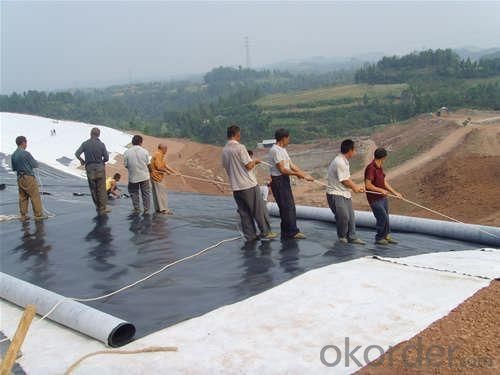- Understanding the Role of Geomembrane Liners in Waste Management
- Innovations in Geomembrane Liners for Water Management
- Geomembrane Liners: A Comprehensive Guide
- The Future of Geomembrane Liners in Civil Engineering
- Geomembrane Liners: Enhancing Landfill Stability
Manager:
WhatsApp:+86 177 0135 2670
Tel:+86 177 0135 2670
Email:marketing@okorder.com
Address:3rd Floor, No.2 Building, No.1 Sanlihe Road
The Role of Geomembrane Liners in the Management of Hazardous Waste
Geomembrane liners are a crucial component in the management of hazardous waste, playing a pivotal role in protecting the environment and human health. These synthetic materials, often made from high-density polyethylene (HDPE), are impermeable barriers that prevent the migration of contaminants into the surrounding soil and groundwater. In this article, we will explore the various aspects of geomembrane liners, their importance, and how they contribute to a safer and cleaner environment.

The Importance of Geomembrane Liners
Geomembrane liners are essential in waste management facilities, landfills, and other areas where hazardous materials are stored or disposed of. They act as a barrier between the waste and the environment, preventing the leaching of harmful chemicals into the soil and water sources. This is particularly important in areas with high groundwater levels or where the soil is permeable, as it minimizes the risk of contamination.
How Geomembrane Liners Work
The primary function of a geomembrane liner is to create an impermeable layer that prevents the passage of liquids and gases. They are designed to withstand the pressure and weight of the waste above them, as well as the chemical composition of the waste itself. The liners are typically installed in multiple layers, with each layer serving a specific purpose, such as protection, filtration, or drainage.
Types of Geomembrane Liners
There are several types of geomembrane liners available, each with its own set of properties and applications. Some of the most common types include:
- High-Density Polyethylene (HDPE): Known for its durability and resistance to chemicals, HDPE liners are widely used in landfills and other waste containment facilities.
- Low-Density Polyethylene (LDPE): LDPE liners are more flexible than HDPE and are often used in applications where flexibility is required, such as around pipes or irregular surfaces.
- Polyvinyl Chloride (PVC): PVC liners offer excellent resistance to chemicals and are often used in industrial settings where strong chemical resistance is needed.
- Ethylene Propylene Diene Monomer (EPDM): EPDM liners are known for their resistance to UV radiation and are often used in outdoor applications.
Installation and Maintenance
Proper installation of geomembrane liners is critical to their effectiveness. The liners must be carefully laid out, with attention paid to seams and joints to ensure a watertight seal. Regular maintenance is also essential to ensure the longevity and integrity of the liner. This includes periodic inspections for damage, leaks, or signs of wear and tear.
Challenges and Solutions
Despite their many benefits, geomembrane liners can face challenges such as installation difficulties, susceptibility to damage, and the need for ongoing maintenance. However, these challenges can be mitigated through careful planning, the use of high-quality materials, and a commitment to regular maintenance and inspection.
The Future of Geomembrane Liners
As our understanding of environmental protection grows, so too does the demand for effective and sustainable waste management solutions. Geomembrane liners are likely to play a significant role in this future, with ongoing research and development aimed at improving their performance, durability, and environmental impact.
Personal Reflections on Geomembrane Liners
From a personal perspective, I've always been fascinated by the ingenuity behind geomembrane liners. They represent a harmonious blend of engineering and environmental stewardship, ensuring that we can manage hazardous waste in a way that is both responsible and protective of our planet's resources.
In conclusion, geomembrane liners are an indispensable tool in the management of hazardous waste. Their ability to prevent contamination and protect the environment makes them a vital component of any waste management strategy. As we continue to innovate and improve upon these materials, we can look forward to a future where waste management is safer, more efficient, and more sustainable.
- Previous:The Application of Geomembrane Liners in the Food and Beverage Industry
- Next:Geomembrane Liners: A Solution for Acid Mine Drainage
-
2024-12-05Geomembrane Liners: A Comprehensive Guide






